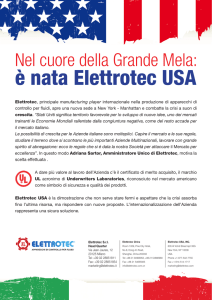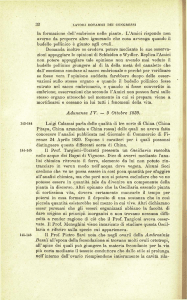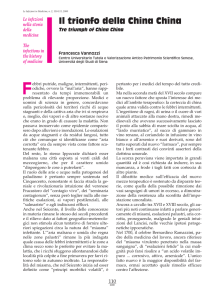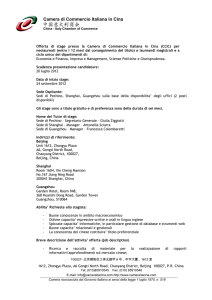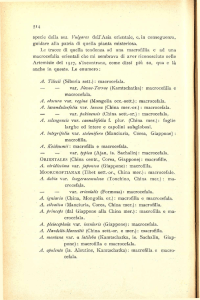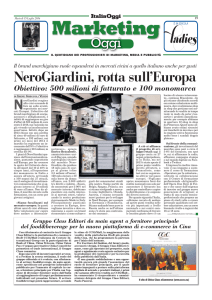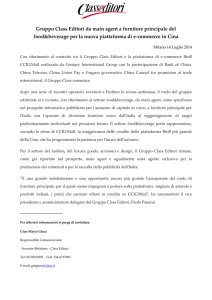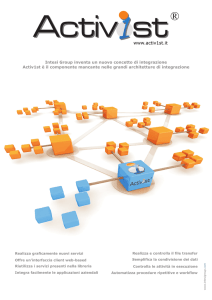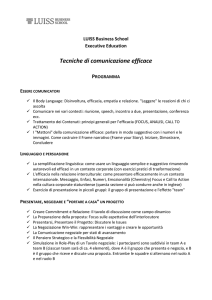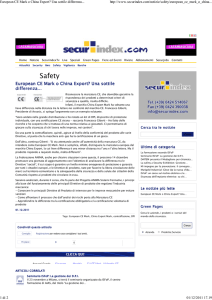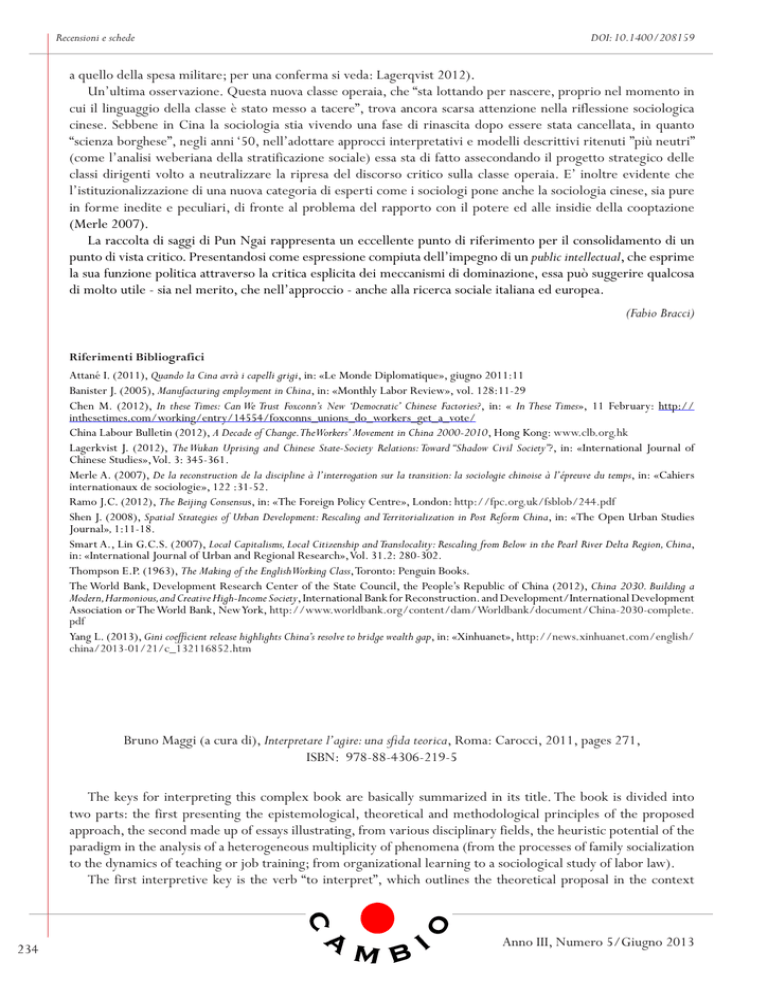
Recensioni e schede
DOI: 10.1400/208159
a quello della spesa militare; per una conferma si veda: Lagerqvist 2012).
Un’ultima osservazione. Questa nuova classe operaia, che “sta lottando per nascere, proprio nel momento in
cui il linguaggio della classe è stato messo a tacere”, trova ancora scarsa attenzione nella riflessione sociologica
cinese. Sebbene in Cina la sociologia stia vivendo una fase di rinascita dopo essere stata cancellata, in quanto
“scienza borghese”, negli anni ‘50, nell’adottare approcci interpretativi e modelli descrittivi ritenuti ”più neutri”
(come l’analisi weberiana della stratificazione sociale) essa sta di fatto assecondando il progetto strategico delle
classi dirigenti volto a neutralizzare la ripresa del discorso critico sulla classe operaia. E’ inoltre evidente che
l’istituzionalizzazione di una nuova categoria di esperti come i sociologi pone anche la sociologia cinese, sia pure
in forme inedite e peculiari, di fronte al problema del rapporto con il potere ed alle insidie della cooptazione
(Merle 2007).
La raccolta di saggi di Pun Ngai rappresenta un eccellente punto di riferimento per il consolidamento di un
punto di vista critico. Presentandosi come espressione compiuta dell’impegno di un public intellectual, che esprime
la sua funzione politica attraverso la critica esplicita dei meccanismi di dominazione, essa può suggerire qualcosa
di molto utile - sia nel merito, che nell’approccio - anche alla ricerca sociale italiana ed europea.
(Fabio Bracci)
Riferimenti Bibliografici
Attané I. (2011), Quando la Cina avrà i capelli grigi, in: «Le Monde Diplomatique», giugno 2011:11
Banister J. (2005), Manufacturing employment in China, in: «Monthly Labor Review», vol. 128:11-29
Chen M. (2012), In these Times: Can We Trust Foxconn’s New ‘Democratic’ Chinese Factories?, in: « In These Times», 11 February: http://
inthesetimes.com/working/entry/14554/foxconns_unions_do_workers_get_a_vote/
China Labour Bulletin (2012), A Decade of Change.TheWorkers’ Movement in China 2000-2010, Hong Kong: www.clb.org.hk
Lagerkvist J. (2012), The Wukan Uprising and Chinese State-Society Relations: Toward “Shadow Civil Society”?, in: «International Journal of
Chinese Studies», Vol. 3: 345-361.
Merle A. (2007), De la reconstruction de la discipline à l’interrogation sur la transition: la sociologie chinoise à l’épreuve du temps, in: «Cahiers
internationaux de sociologie», 122 :31-52.
Ramo J.C. (2012), The Beijing Consensus, in: «The Foreign Policy Centre», London: http://fpc.org.uk/fsblob/244.pdf
Shen J. (2008), Spatial Strategies of Urban Development: Rescaling and Territorialization in Post Reform China, in: «The Open Urban Studies
Journal», 1:11-18.
Smart A., Lin G.C.S. (2007), Local Capitalisms, Local Citizenship and Translocality: Rescaling from Below in the Pearl River Delta Region, China,
in: «International Journal of Urban and Regional Research», Vol. 31.2: 280-302.
Thompson E.P. (1963), The Making of the EnglishWorking Class, Toronto: Penguin Books.
The World Bank, Development Research Center of the State Council, the People’s Republic of China (2012), China 2030. Building a
Modern, Harmonious, and Creative High-Income Society, International Bank for Reconstruction. and Development/International Development
Association or The World Bank, New York, http://www.worldbank.org/content/dam/Worldbank/document/China-2030-complete.
pdf
Yang L. (2013), Gini coefficient release highlights China’s resolve to bridge wealth gap, in: «Xinhuanet», http://news.xinhuanet.com/english/
china/2013-01/21/c_132116852.htm
Bruno Maggi (a cura di), Interpretare l’agire: una sfida teorica, Roma: Carocci, 2011, pages 271,
ISBN: 978-88-4306-219-5
The keys for interpreting this complex book are basically summarized in its title. The book is divided into
two parts: the first presenting the epistemological, theoretical and methodological principles of the proposed
approach, the second made up of essays illustrating, from various disciplinary fields, the heuristic potential of the
paradigm in the analysis of a heterogeneous multiplicity of phenomena (from the processes of family socialization
to the dynamics of teaching or job training; from organizational learning to a sociological study of labor law).
The first interpretive key is the verb “to interpret”, which outlines the theoretical proposal in the context
234
Anno III, Numero 5/Giugno 2013
DOI: 10.1400/208159
Recensioni e schede
of Weber’s reflection and which therefore opposes it to the objectivist/functionalist approaches (explaining
the meaning of conduct by means of the relatively independent logic of the social system) and to the more
subjectivist-phenomenological ones, which reduce the organized forms of social life to an (often counterintuitive) epiphenomenon of the complicated play of interactions (at times oriented by the material interest of
individuals, and at times by their autonomous ability to give meaning to things and others.The focus of the analysis
is however on the fully practical and intersubjective nature of the construction processes of action contents. This
is explained in the editor’s contribution, which presents the foundations of Theory of Organizational Acting) and in
those of the so-called “elder” researchers (Clot, a leading exponent of the French school of the Clinic of Activity;
De Terssac, who has been involved in the development of a Theory of OrganizingWork, and finally Faïta, promoter of
a metalinguistic analysis of the work). Through a critical reading of American pragmatist thought, of the Schütz’s
constructivist thought, and finally of Giddens’ Structurationalist Theory, the authors try to go beyond the Weber’s
still consciousness-based actor model, and - thanks to Vygotsky’s psychological and Bachtin’s sociolinguistic
contributions - they arrive at a procedural idea of action and at a vision of the act as a kind of dialectical relationship
between the subject, his/her object and his/her interlocutors, equally involved towards him/her and towards the
latter.
From here, the second interpretive key, summarized in the title by the term “act”. Behavior is never the product
of a previous assignment of sense which expresses itself in observable behavior according to specified purposes
and by the most convenient and rational means. It takes shape on the contrary in the course of its realization: in
the relationship of the agent with the object of his/her initiative and with the interactors that are related in the
same way, with the same openness to others. Aims, tools, desires, motivations - in a word: the subject’s self - takes
“shape” in the flow of their communicatively mediated becoming, and such “incorporation” essentially means three
things.
The first is that the act is always rooted in the emotional depths of human beings and it is therefore guided
by a rationality that can only be “bounded”. The second is that the rootedness in such a life flow leads to the
recognition of the need to distinguish between “activities” (such as a “vivid” experiential complex opened to a
variety of practical achievements, some of which are implemented, others exonerated or de facto excluded)
and “actions” (that is, behavior actually undertaken and therefore visible to the eye of the observer). The third,
finally, is that the act must be conceived as a continuous process of actions and decisions, each of which is both the
“track” of the segments along which that underlying activity has manifested itself, and the necessary anchorage for
a renewed “critical” sociology. A critical sociology that is able to “work” with the observed subjects in advancing
their awareness of the consequences of their institutionalized choices in encoded roles, and that is able in this way
- by almost “maieutic” research methods - to increase their “power of action” and their autonomy in the production
of rules legitimately governing their collective and organized creation.
The last interpretive key - which provokes some overall objections - consists of an insistence on challenging
current theories of action, both of an organizational and more generally social nature. First of all, the aim of these
researchers is to outline the features of a third epistemological way, able to synthesize “for the sake of convergence”
the contributions of different epistemological approaches and to propose a unitary conception of acting, beyond
the classical conceptual dichotomies such as objectivism/subjectivism or system/action.
The solution outlined, which is partially classified in those research programs Archer has defined as “conflation
to the center”, however makes use at times of a rather simplified representation of “rival” paradigms (for example,
the characterization of subjectivist approaches that, as far as they are sensitive to the freedom conditions of
individual action, rarely come to consider the organized reality of social life as an always reversible product of
human interactions). Also, it does not problematize enough theories that - even from a “holistic” point of view have proposed a non-syncretic synthesis of phenomenological and symbolic-interactionistic epistemologies able to
account for some of the “new” cornerstones of organizational acting theorists (in particular Luhmann’s functionalstructuralism, with his theory of sense as an ever accessible “archive” for practical and communicational solutions
that are temporarily “removed “ by actual materialization of the choices of action). Secondly, the critical potential
of Maggi’s and colleagues’ stated paradigm aims for increasing - in a reticular and complex socio-economic context
such as that of “late” modern advanced industrial societies - the power of acting of subjects through “indirect”
Anno III, Numero 5/Giugno 2013
235
Recensioni e schede
DOI: 10.1400/208159
methods of research-action that encourage actors to problematize their customary behavior and communications
and to question them in the name of an awareness of their “vivid and creative activity”, thanks to the “dialogical
maieutical role” of the researcher. But - we ask - would this same sociological work not perhaps require in turn a
metalinguistic critical perspective capable of safeguarding “sociological intervention” from the risk of intellectual
conditioning and external construction of the consciousness of the actors themselves? And so on, according to a
never-ending procedure?
(Filippo Buccarelli)
Guido Crainz, Il Paese reale. Dall’assassinio di Moro all’Italia di oggi, Roma: Donzelli, 2012, pagine 390,
ISBN: 978-88-6036-732-7
Con questo suo ultimo lavoro, Guido Crainz chiude la sua trilogia della storia italiana del dopoguerra, dopo
la “Storia del miracolo italiano” e “Il Paese mancato”. Il libro è dedicato agli anni che vanno dall’assassinio di
Aldo Moro (1978) fino al governo Monti. Anni di trasformazioni radicali che hanno inciso in maniera netta sul
nostro presente. Il titolo suggerisce subito la linea di ricerca: il paese reale è quello che si distingue da quello
della politica, delle istituzioni. E infatti, lo storico, pur tenendo come tappe cronologiche gli eventi politici più
rilevanti, predilige nelle sue analisi soffermarsi su elementi di carattere sociologico e culturale. In quest’ottica,
una fonte privilegiata sono i rapporti del Censis dei quali, oltre ai dati (non molti in realtà quelli citati) si predilige
soffermarsi sulle interpretazioni.
La “mutazione antropologica” degli italiani è il filo conduttore del volume che, proprio per questa impostazione,
dà un’ampia attenzione a valori, culture, atteggiamenti, mode. Anche per questo, non mancano riferimenti alla
cultura popolare, a libri best seller, a canzoni di musica leggera, ai film, citati come sostegno ad hoc all’interno
della narrazione del volume che si distingue meritoriamente per uno stile esposito chiaro e accattivante. Altra
grande fonte di Crainz sono i quotidiani, soprattutto le analisi delle grandi firme, anch’essi esibite come prove
d’osservazioni esemplari dei cambiamenti in corso.
I primi due capitoli sono dedicati agli anni Settanta. La tesi principale è che l’allontanamento tra la società
civile e quella politica, che si consumerà nei primi anni Novanta, abbia inizio proprio in questo decennio. Dalla
società figlia del boom aumentano domande più individualizzate, più sensibili al privato, e nello stesso tempo
si nota l’emergere di esigenze di partecipazione meno legate ai partiti. Sono istanze che le politica non riesce a
captare e che, nel corso del tempo, aumenteranno sempre più il distacco tra cittadini e rappresentanti.
Alla fase di incubazione del decennio ‘80 è dedicato il terzo capitolo nel quale vengono evidenziati gli “incerti
inizi”, caratterizzati dall’esplodere della violenza, del terrorismo, dalla mafia. Il riflusso, concetto che come fa
notare lo storico viene utilizzato dai principali osservatori già a partire della fine del 1978, è quello che racchiude
meglio di altri i fenomeni politici, sociali, economici, culturali, di costume degli anni Ottanta, oggetto del quarto
capitolo. Esso identifica il trionfo del privato sul pubblico, del personale sul collettivo, dell’individuo sulla società
e sullo stato. Il mutare di valori del decennio è colto in maniera attenta da Crainz che si sofferma sul primato
dell’economia, sul successo del made in Italy, sull’aumento degli scambi nella borsa valori (con i risparmiatori si
trasformano progressivamente in investitori), sui nuovi linguaggi della televisione commerciale, della pubblicità,
delle culture giovanili.
In questi anni si registra anche una fase di crescita economica nella quale, però, la politica manca di provvedere
a un risanamento del debito, anzi, quest’ultimo è ingrossato da un aumento della spesa pubblica che non si traduce
in un aumento del welfare. La spesa pubblica, si fa notare, è solo la modalità con la quali i partiti in crisi provano a
mantenere il proprio consenso sostituendo il voto d’appartenenza con quello di scambio. L’aspetto più grave del
periodo analizzato è per l’autore il progressivo dissolversi del senso civico, di un’etica pubblica, sia tra i cittadini
(è in questo periodo che esplode l’evasione), sia nelle classi dirigenti (il sistema delle tangenti costituisce la punta
236
Anno III, Numero 5/Giugno 2013

